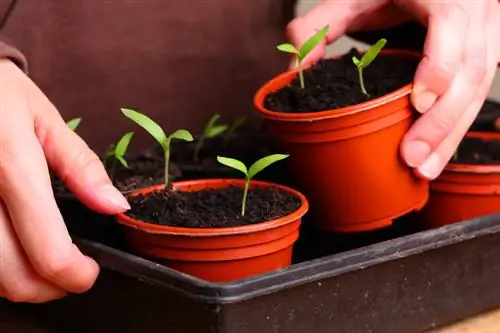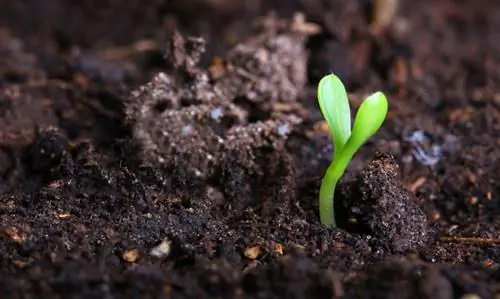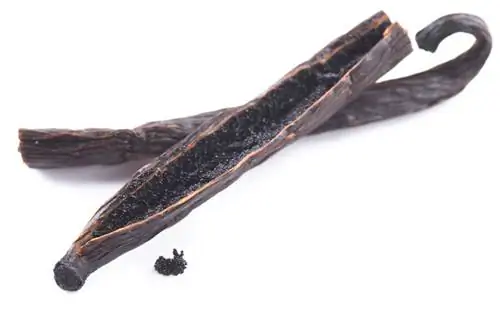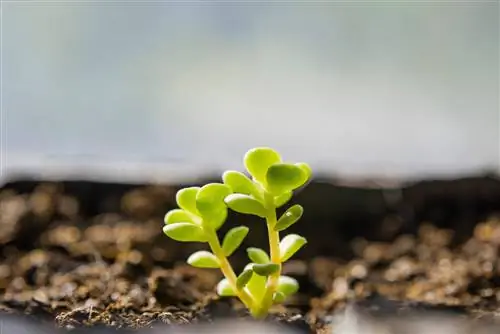- Author admin [email protected].
- Public 2023-12-16 16:46.
- Last modified 2025-01-23 11:20.
The beautiful edelweiss shows its velvety, hairy, bright white star flowers in July. The plant, which originally comes from the high mountains, is a real eye-catcher - and is relatively easy to grow yourself from seeds. However, the resulting plants are more difficult to care for because the edelweiss is very sensitive to moisture.
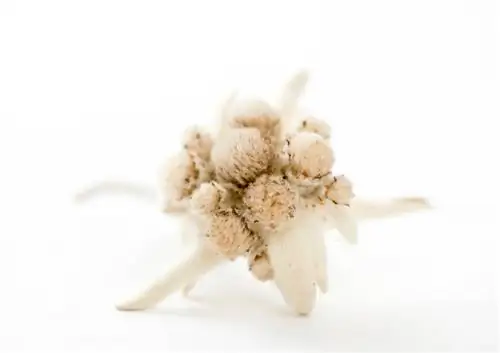
How to grow edelweiss from seeds?
To grow edelweiss from seeds, you should first stratify the seeds in the vegetable compartment of the refrigerator for two weeks. Then sow in potting soil or a lean sand-soil mixture, keep slightly moist and warm slowly. After germination, prick out and later transplant outdoors.
Sowing edelweiss
Like so many mountain plants, the perennial edelweiss is a cold germinator, so you need to stratify the seeds before sowing. To do this, pack the seeds in an airtight container or in a freezer bag with moist sand and store it in the vegetable compartment of your refrigerator for about two weeks. Then proceed as follows:
- Fill seed trays or small growing pots with potting soil or a lean sand-soil mixture.
- Coconut substrate (€17.00 on Amazon) is also very suitable.
- Cover the seeds very thinly with soil.
- Place the container with the seeds in a bright but cool place.
- Increase the temperature slowly - no sudden increases in temperature!
- Pick out the seedlings as soon as they develop the first real leaf after the two cotyledons.
Make sure to always keep the soil slightly moist after sowing. The best time for sowing is March, the latest date is April.
Care for the young plants properly
The young plants that grow from the seeds can go outdoors as soon as (night) frosts are no longer expected. This is usually the case after the Ice Saints.
Planting edelweiss in the garden
Edelweiss feels most at home in a rock garden with a permeable, but barren and lime-rich substrate. In addition, the stones - especially if you use white stones - act as a kind of heat storage. It is important that you only water a little and, above all, do not fertilize. This also means that you avoid mixing in compost.
Caring for edelweiss in the pot
The perennial, which grows to a maximum height of 20 centimeters, also feels very comfortable in flower boxes, bowls or pots. However, the same advice applies here as for planted edelweiss plants: choose lean, well-drained soil with a high proportion of sand and lime. Make sure that the irrigation water can drain away, i.e. H. the planter must have good drainage.
Tips & Tricks
Older edelweiss plants can be easily propagated and rejuvenated by division. By taking such a measure you increase the lifespan of such a specimen.


